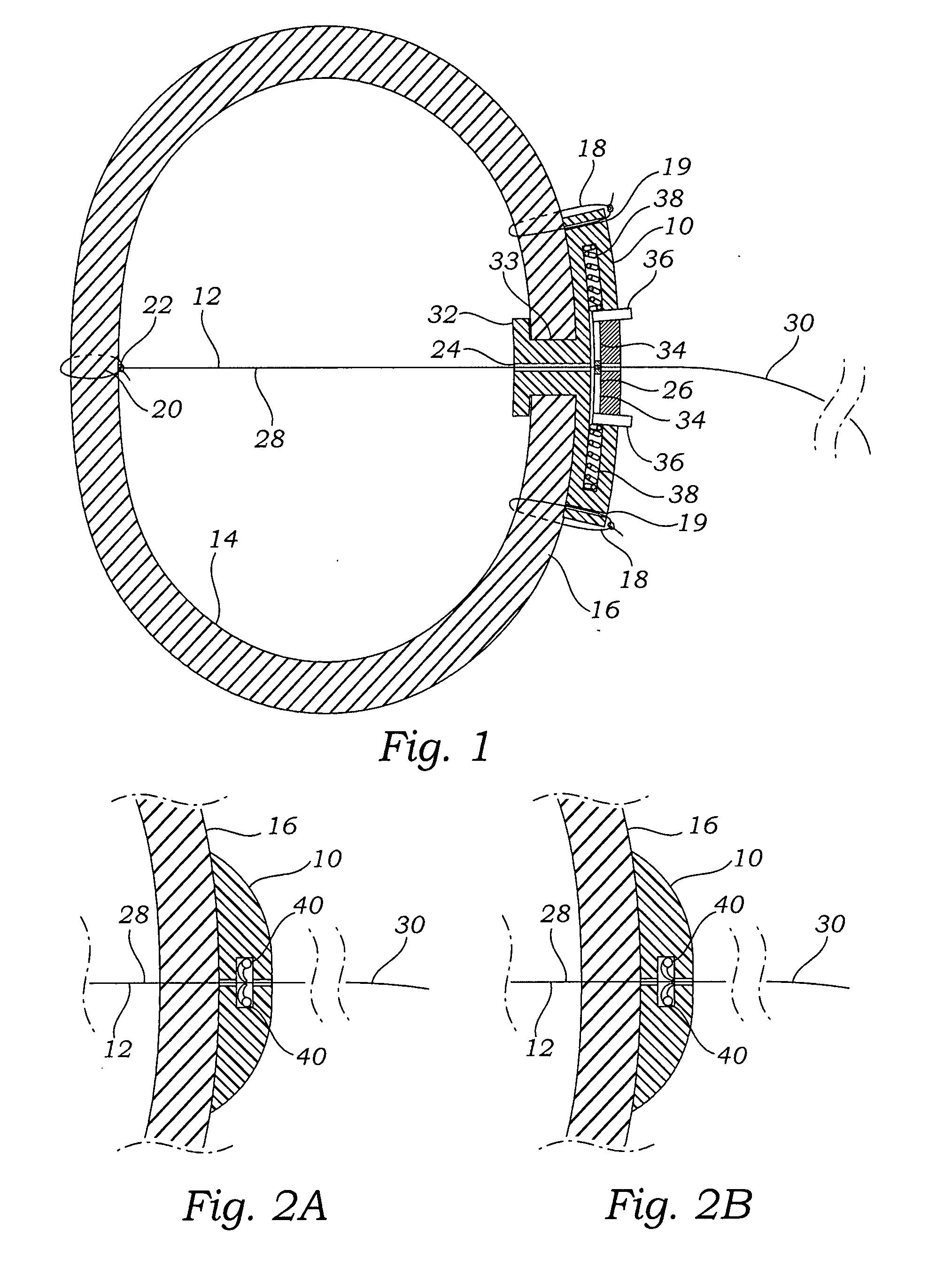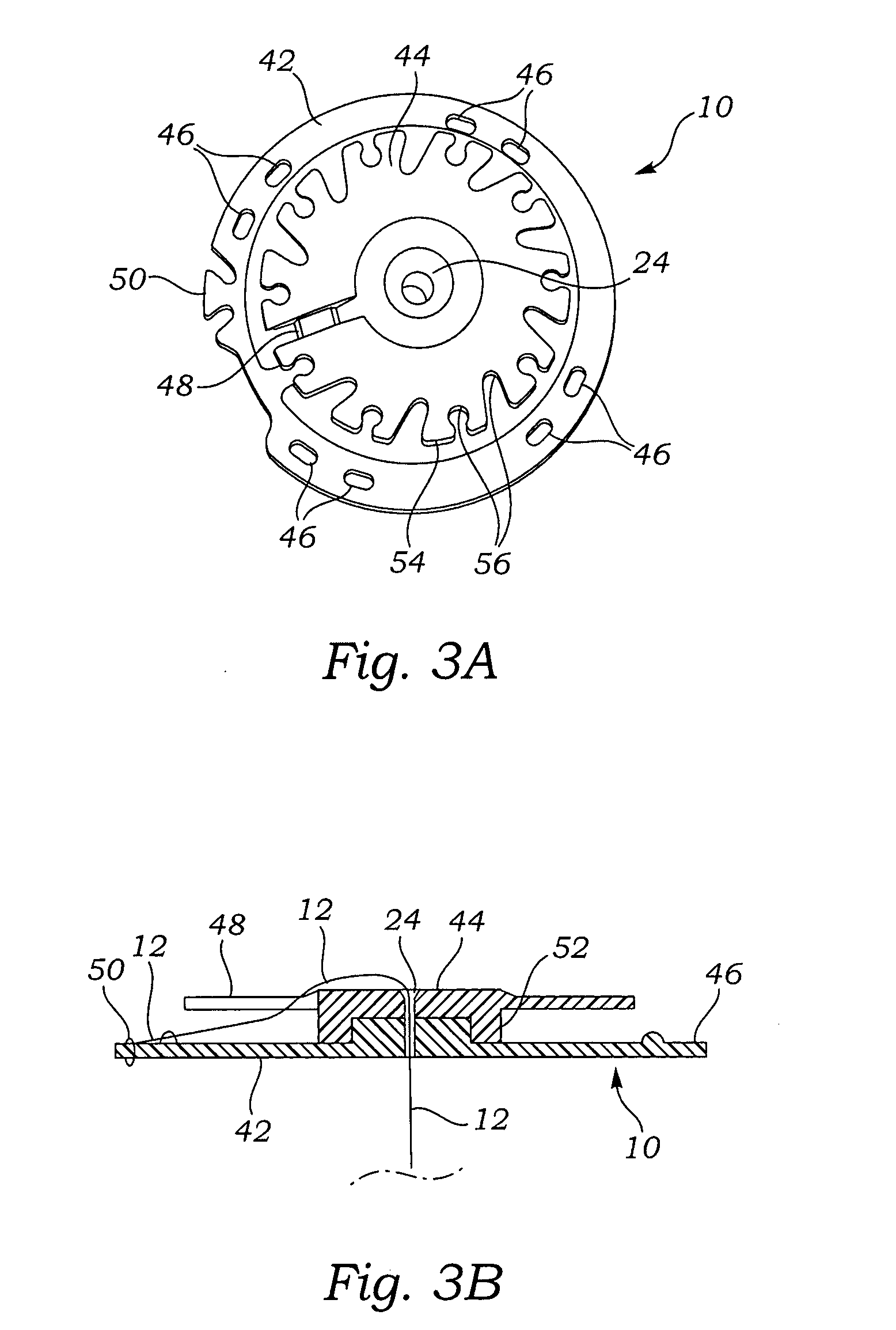Apparatus, system, and method for applying and adjusting a tensioning element to a hollow body organ
a technology of tensioning elements and hollow bodies, applied in the field of medical devices, can solve problems such as heart failure, significant increase in wall tension and/or stress, and heart failure, and achieve the effect of adjusting the length of (and thereby the tension in)
- Summary
- Abstract
- Description
- Claims
- Application Information
AI Technical Summary
Benefits of technology
Problems solved by technology
Method used
Image
Examples
Embodiment Construction
[0035]FIG. 1 depicts an adjustable support pad 10 according to an embodiment of the invention with a tensioning element in the form of a suture line 12 under tension within an organ 14. The adjustable support pad 10 is placed against the outside of the organ wall 16 and secured thereto via ordinary sutures 18 passing through suture holes 19 on the support pad 10. The suture line 12 is secured to an attachment point 20 via a suture knot 22. The suture line 12 passes from the attachment point 20 through a hole 24 in the adjustable pad 10 to a locking mechanism 26. With the suture line 12 secured to the adjustable support pad 10, the suture line 12 will have a tensioned portion 28 passing from the attachment point 20 to the adjustable support pad 10, and a slack portion 30 which is past the adjustable support pad 10.
[0036] In the particular embodiment of FIG. 1, the adjustable pad 10 includes a protective flange 32 which surrounds the pad hole 24 and is secured to a generally tubular ...
PUM
 Login to View More
Login to View More Abstract
Description
Claims
Application Information
 Login to View More
Login to View More - R&D
- Intellectual Property
- Life Sciences
- Materials
- Tech Scout
- Unparalleled Data Quality
- Higher Quality Content
- 60% Fewer Hallucinations
Browse by: Latest US Patents, China's latest patents, Technical Efficacy Thesaurus, Application Domain, Technology Topic, Popular Technical Reports.
© 2025 PatSnap. All rights reserved.Legal|Privacy policy|Modern Slavery Act Transparency Statement|Sitemap|About US| Contact US: help@patsnap.com



